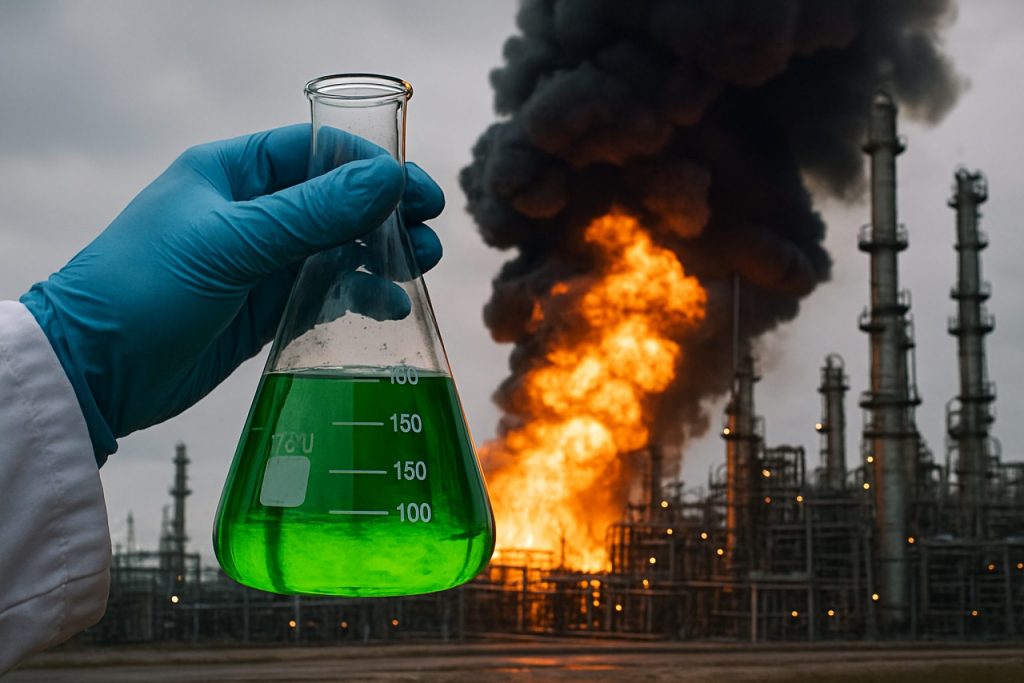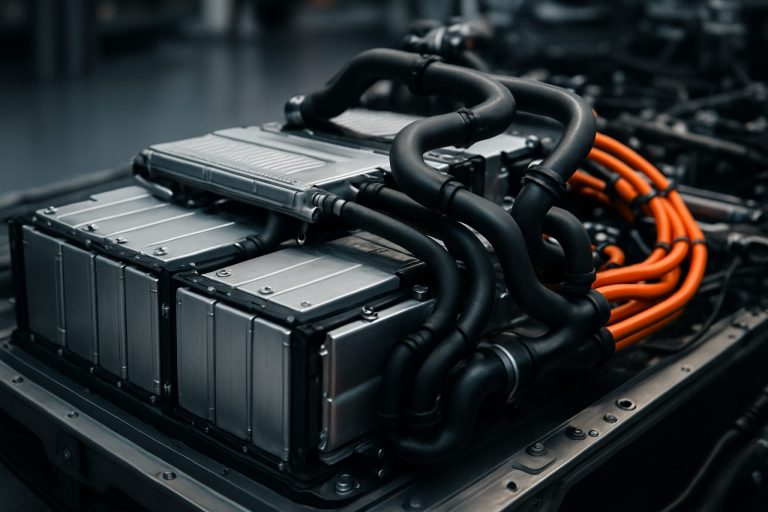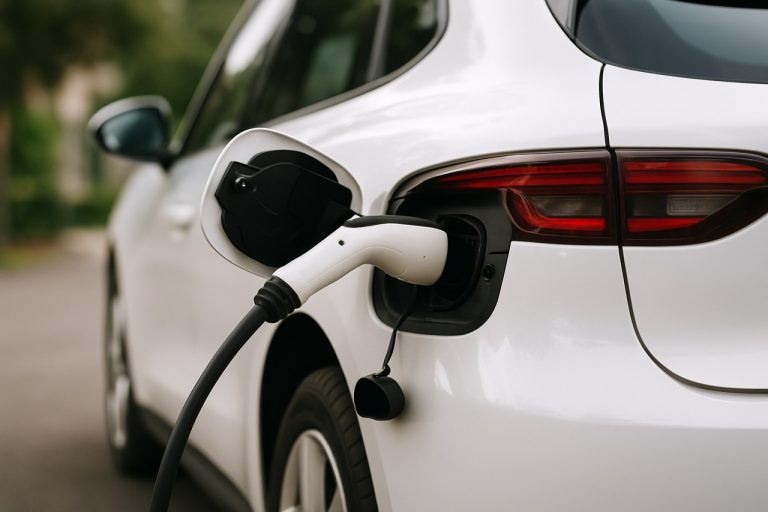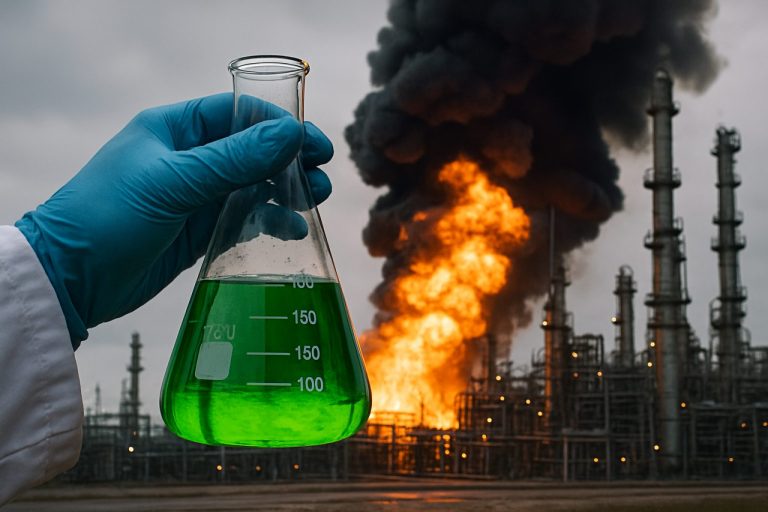
- Innovative hydrogen production uses solar energy and agricultural waste, reducing energy consumption by up to 600% compared to traditional methods.
- This process yields nearly 35% hydrogen by weight, transforming farm detritus into valuable energy resources.
- Carbon dioxide byproduct is captured for reuse, but managing emissions is crucial as production scales up.
- Ammonia synthesis now occurs at room temperature via lithium electrodes, lowering costs by 60% and minimizing environmental impact.
- The technology empowers farmers as clean energy producers, creating new revenue streams and enhancing agricultural sustainability.
- Careful oversight is essential to prevent ecological harm and ensure a fair transition for affected industries and communities.
On the wind-blown campus of the University of Illinois, Chicago, a group of engineers have lit the fuse on a future that hums with promise—and pulses with peril. By reimagining how hydrogen and nitrogen interact, this team has made a leap that promises to rewrite the rules of chemical manufacturing, energy sustainability, and agricultural self-sufficiency.
In glistening, sun-drenched labs, UIC’s scientists harnessed the quiet power of solar energy and the gritty resilience of agricultural waste. Farm detritus, from cow manure to dried sugarcane husks, now fuels the next evolution of hydrogen production. Picture this: water molecules cracked open not by roaring industrial furnaces but by gentle rays of the sun and dark, carbon-rich biochar, all while sipping power so gently it could run on less than a pair of AA batteries.
Hydrogen, the universe’s most abundant element, gushes forth—almost 35% extracted by weight from this novel process. The clever twist? The energy demand is diminished by a staggering 600 percent compared to traditional water-splitting methods. It’s a vision where yesterday’s waste powers tomorrow’s world.
But revolutionary chemistry rarely comes without shadows. The byproduct of this excitement—carbon dioxide—demands vigilant capture, lest it quietly erode the green promises. UIC’s process corrals this CO₂, earmarking it for second lives: in bubbly sodas, or as essential feedstock for plastics and other chemicals. Yet as the scale of production expands, the delicate balance of benefit and environmental risk wobbles to the forefront.
Meanwhile, ammonia—a cornerstone molecule for the world’s food supply—also stands on the brink of transformation. Where once ammonia’s birth required enormous pressure, searing temperatures, and environmentally costly fossil fuels, this new playbook deploys lithium electrodes and hydrogen-rich solutions to assemble ammonia at room temperature. Not only does this drop industrial costs by 60%, but it carves a path toward safer, cleaner manufacturing.
Under these new rules, farmers emerge as unexpected power brokers. Solar panels shimmer atop barns. Waste once destined for compost heaps now springs to higher purpose, spinning off hydrogen onsite—fuel for the farm, an extra revenue stream for rural America. The method’s efficiency hints at a future where even the smallest agricultural operations become miniature clean energy plants.
And yet, the collision of hydrogen and nitrogen, for all its ingenuity, is not gentle. Managed carelessly, this fusion risks severe ecological damage. The scale at which it’s deployed will shape whether it cleans our skies or quietly poisons them, underscoring how breakthroughs can ignite both hope and new anxieties.
As these methods ripple out from UIC’s laboratories, the effects will extend well beyond chemistry textbooks. Industrial giants may scramble. Jobs will shift. Communities, particularly those rooted in old manufacturing methodologies, could teeter until new skills and sectors take hold. Ensuring fair transitions and sustainable farming practices isn’t a footnote—it’s the very linchpin of progress.
What do these discoveries spell? A clarion call—both for opportunity and for vigilance. Cleaner energy and fertilizer beckon, but only if society moves as thoughtfully as the engineers who sparked this revolution. Innovation, when coupled with responsible stewardship, promises a greener, more equitable tomorrow.
For more on innovation in energy and sustainability, explore National Geographic, or keep pace with global scientific advances at Nature.
Key takeaway: UIC’s fusion of hydrogen and nitrogen could radically cut the environmental cost and expand access to clean energy and fertilizer—but only if humanity acts with intelligence and foresight. Progress rarely travels in a straight line, but, with careful hands on the wheel, the destination remains a brighter world.
Farmers Turn Waste Into Gold: The Game-Changing Future of Green Hydrogen & Ammonia
Unlocking the Hottest Breakthroughs in Sustainable Chemistry
The University of Illinois Chicago’s (UIC) revolutionary hydrogen and ammonia production process isn’t just a scientific milestone—it’s a blueprint for transforming global industries. Beyond the hopeful tone of the original article, let’s break down the real-world impact, answer critical questions, highlight industry trends, and give you actionable tips as the world pivots to green energy.
—
What Makes UIC’s Method So Disruptive?
Features—At a Glance
– Feedstock: Utilizes agricultural waste (e.g., manure, sugarcane husks)
– Energy: Powered by solar, only requires a tiny electrical input (less than two AA batteries)
– Hydrogen Yield: Up to 35% by weight extracted
– Ammonia Production: Achieved at room temperature, using lithium electrodes
– Energy Efficiency: Up to 600% lower electricity demand than traditional electrolysis
– CO₂ Handling: Built-in capture and planned reuse as chemical feedstock
—
The Science—How-To in Simple Steps
1. Collection: Gather agricultural waste; process into biochar (charcoal-like substance).
2. Electrolysis: Use sunlight and a mild current to split water in presence of biochar.
3. Hydrogen Capture: Collect hydrogen gas for use in fuel cells, storage, or local operations.
4. Ammonia Synthesis: Combine resultant hydrogen with nitrogen at room temperature using lithium electrodes.
5. Byproduct Management: Capture CO₂, funnel for reuse.
Tip: Farmers can set up microplants with solar panels and waste management systems for energy and fertilizer independence.
—
Real-World Use Cases & Industry Shifts
– Clean Energy on Farms: Rural communities generate their own hydrogen, cutting transport costs and grid dependency.
– Decentralized Fertilizer Production: Ammonia produced onsite, avoiding fossil-fuel-based Haber-Bosch plants.
– Circular Economy: Waste is valorized—turning a disposal cost into a profit center.
– Industrial Decarbonization: Companies can license the technology to lower their carbon footprint.
—
Pressing Reader Questions: Answered
Q: Is this technology commercially ready?
A: Pilot-scale demonstrations are underway, but widespread adoption depends on economics and regulatory support.
Q: What are the limitations?
A: Scaling remains a challenge, especially in consistent waste supply and CO₂ capture at large volumes. Lithium availability is another concern for widespread ammonia production.
Q: How does the environmental impact compare?
A: Major reduction in emissions, but lifecycle analyses must account for waste transport, lithium sourcing, and CO₂ management. According to IEA, traditional hydrogen production accounts for over 900 Mt of CO₂ yearly—green methods can slash this figure dramatically.
Sources: International Energy Agency, Nature reviews.
—
Pros & Cons Overview
Pros
– Massive Emissions Reduction: Slashes CO₂ output compared to legacy processes.
– Resource Efficiency: Turns waste into valuable products.
– Distributed Production: Empowers small-scale producers.
– Lower Operating Costs: Up to 60% costs reduction for ammonia.
Cons
– Scaling Complexities
– CO₂ Capture Imperative
– Resource Dependency (e.g., lithium for electrodes)
– Potential for Ecological Disruption if mismanaged
—
Emerging Industry Trends & Market Forecasts
– Green Hydrogen Boom: According to BloombergNEF, global green hydrogen production could reach 500 million tons by 2050 as market prices fall.
– Sustainable Ammonia: Growing demand for fossil-free fertilizers (FAO, 2022) is spurring investment.
– Waste-to-Energy: Circular economy models are forecast to save agri-businesses billions by mid-century.
—
Controversies, Challenges & Security
– Resource Equity: Who controls the waste streams and technology patents?
– Sustainability Concerns: Large-scale lithium use can create new supply chain and environmental pressures.
– Job Market Shakeups: Old chemical plant workers may require retraining, sparking labor debates (The Economist, 2023).
—
Quick Life Hacks & Actionable Recommendations
– Farmers: Partner with local universities or extension offices to explore feasibility of micro hydrogen/ammonia plants.
– Policymakers: Incentivize CO₂ capture technologies to ensure responsible rollout.
– Businesses: Watch for licensing opportunities as UIC patents progress; early adoption could offer market edge.
– Consumers: Favor food products grown using green fertilizers to support sustainable ag.
For Further Reading
– Discover more about sustainable innovation in energy with National Geographic
– Stay up-to-date with breakthroughs at Nature
—
Conclusion: The Path from Waste to Wealth
UIC’s solar-biochar hydrogen and room-temperature ammonia synthesis is a landmark leap in clean technology. For early adopters—especially in farming and manufacturing—the benefits are financial, environmental, and social. But this future hinges on vigilant management of byproducts, robust CO₂ capture, and workforce adaptation.
Bottom line: Seize the opportunity, manage the risks, and start the journey toward energy and fertilizer independence—your waste could power the next green revolution.



